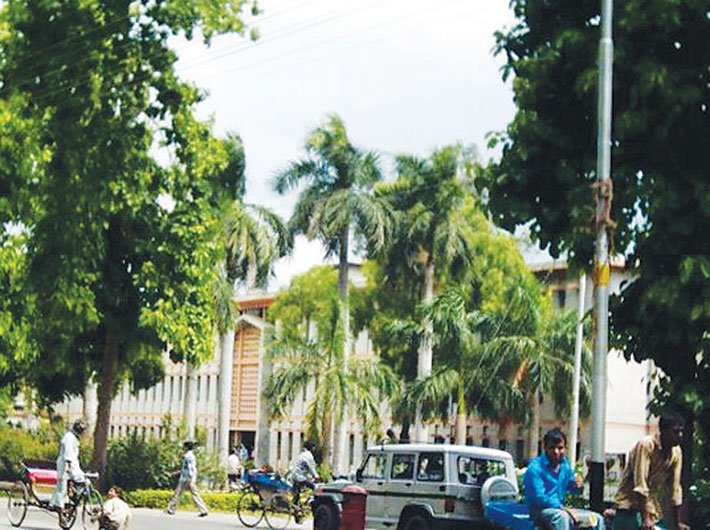Was the university established by the minority or by the government? The supreme court looks at the question with a vexed history
The Aligarh Muslim University (AMU) suffered a jolt on January 11 when the Modi government decided against supporting its case before the supreme court for minority status. Though during the UPA regime the centre had appealed against the Allahabad high court order stripping AMU of minority status, attorney general Mukul Rohatgi submitted before the apex court that the centre was not inclined to pursue the case.
The Modi government’s stand, as stated by Rohatgi, is that the university was an institution established by the government of India and not by the minority, since it was set up under the AMU Act, 1920.
While the Congress government had taken a similar stand in the S Azeez Basha case in which the supreme court held in 1967 that AMU was not a minority institution because it had been established by an Act and not by Muslims, the NDA’s decision not to pursue the case has come as a surprise as the appeal was to defend an amendment by parliament which had been struck down by the high court.
The Congress government’s stand in the Azeez Basha case – though on the same lines – had come while defending amendments made by parliament in 1951 and 1965, abridging the administrative independence of AMU.
The Congress government, however, changed its stand later and scripted an amendment to the AMU Act in 1981 to remove the basis on which the constitution bench drew the conclusion in the case. Among other changes to confer minority status to AMU, the amendment removed the word “establish” from the preamble to the 1920 Act to recognise the fact that AMU was established by Muslims and not by the government of India.
However, when some students challenged the 50 percent reservation given by AMU to Muslims, a single judge of the Allahabad high court held in 2005 that the university could not reserve seats for Muslims as it was not a minority institution. The division bench dismissed AMU’s appeal in 2006 and invalidated the 1981 amendment by parliament – which the centre had sought to defend in the appeal.
Agreeing with the finding in the Azeez Basha case, Rohatgi is reported to have said: “It is the stand of the union of India that AMU is not a minority university. As the executive government at the centre, we can’t be seen as setting up a minority institution in a secular state.”
The argument by NDA is based on the finding in the 1967 Azeez Basha judgment which held that AMU was “established” by the 1920 Act, which meant by the government. The present case which comes after the 1981 amendment – introduced to override the Azeez Basha judgment – has set grounds for a fresh interpretation by the supreme court.
In the changed circumstances, one of the main questions to be answered by the supreme court in the pending case is whether AMU was established by the 1920 Act or by Muslims. Ironically, the centre decided not to pursue the case on the ground that AMU was established by the 1920 Act.
The centre has relied on the Act to draw the conclusion that the university was “established” by the government and hence there was no question of application of Article 30 which gave minorities the right “to establish and administer educational institutions of their choice”.
Since a university can only be constituted by an Act, the argument means no minority can establish and administer a university.
It is true that the history of formation of AMU and the 1920 Act had been considered by the court in the Azeez Basha case. But the fact that the 1981 amendment had made crucial changes in the Act and the fact that AMU was not a party in the Azeez Basha case cannot be lost sight of. The historical facts which could be placed by AMU cannot be ignored, especially when the 1920 Act refers to societies leading to the formation of the university.
The long title to the Act reads: “An Act to incorporate a teaching and residential Muslim University at Aligarh.” This is supplemented by the preamble stating that “it is expedient to incorporate a teaching and residential Muslim University at Aligarh, and to dissolve the societies registered under the Societies’ Registration Act, 1860 (21 of 1860), which are respectively known as the Muhammadan Anglo- Oriental College, Aligarh, and the Muslim University Association, and to transfer to and vest in the said University all properties and rights of the said societies and of the Muslim University foundation Committee.”
The long title as well as the preamble refers to a ‘Muslim’ university at Aligarh as against the name by which the university was established – Aligarh Muslim University. The lengthy preamble further throws light on step-by-step formation of the institution.
The preamble only forces one to look back to the history behind establishment of AMU. After conceiving the idea of setting up a Muslim university in India, Sir Syed Ahmad Khan visited Oxford and Cambridge universities in 1869 and set up a committee in 1870 for the advancement of learning among Muslims in India. In 1872, he wrote to Muslim chiefs of native states for their help in establishing an institution for Muslim education. In a meeting held that year, a committee comprising only Muslims resolved to set up a university at Aligarh. In 1873, a society called the Mohammadan Anglo-Oriental (MAO) College Fund Committee was created for collecting funds. In 1877, Lord Lytton, the then viceroy of India, laid the foundation stone for the establishment of MAO College on the model of Oxford and Cambridge universities. In a written address presented to the viceroy, the college committee emphasised the intent to convert the college into a university. The rules registered in 1889 stated that only Muslims would be trustees. In 1911, a foundation committee for converting the MAO college into a Muslim university was constituted.
Probably taking into account these historical facts, the 1920 Act provided for a court of AMU with only Muslim members.
Even after independence, Muslims were opposed to interference into the affairs of the university. During the constituent assembly debate on November 8, 1948, ZH Lari, a Muslim member, pointed to interference with the management of AMU. “The second instance which I would place before the house is that the head of an autonomous institution – I mean the Aligarh University – was only the other day asked to quit and give place to another man although that head had the confidence of the University Court and of the community to which the institution appertains.”
On the other hand, HV Kamath, while referring to AMU and BHU being included in the union list to give legislative competence to parliament, said he hoped that “at no distant date the communal tag of the Benares and Aligarh universities will also disappear”.
The first amendment to the AMU Act was made in 1951 itself. The 1951 amendment opened the AMU Court to non-Muslims. The amendments in 1965 diluted the administrative independence of AMU. Azeez Basha challenged these amendments as interference into the rights of the minority institution but the centre successfully defended the amendments contending AMU was not a minority university.
However, the government later changed its view and amended the AMU Act in 1981 to override the Azeez Basha judgment and confer minority status on AMU. The matter is back in court. While the court will decide if the amendment made by parliament is valid, the main question on which the minority status depends is still the same. Who constituted AMU? Was it constituted by the 1920 Act or by Muslims? It is a mixed question of law and history. The answer is not easy. Howsoever strong legal arguments one may give to prove that the 1920 Act established AMU, one cannot deny the historical fact that the institution was founded by Sir Syed Ahmad Khan and his associates. n
(The column appears in the February 1-15, 2016 issue)

